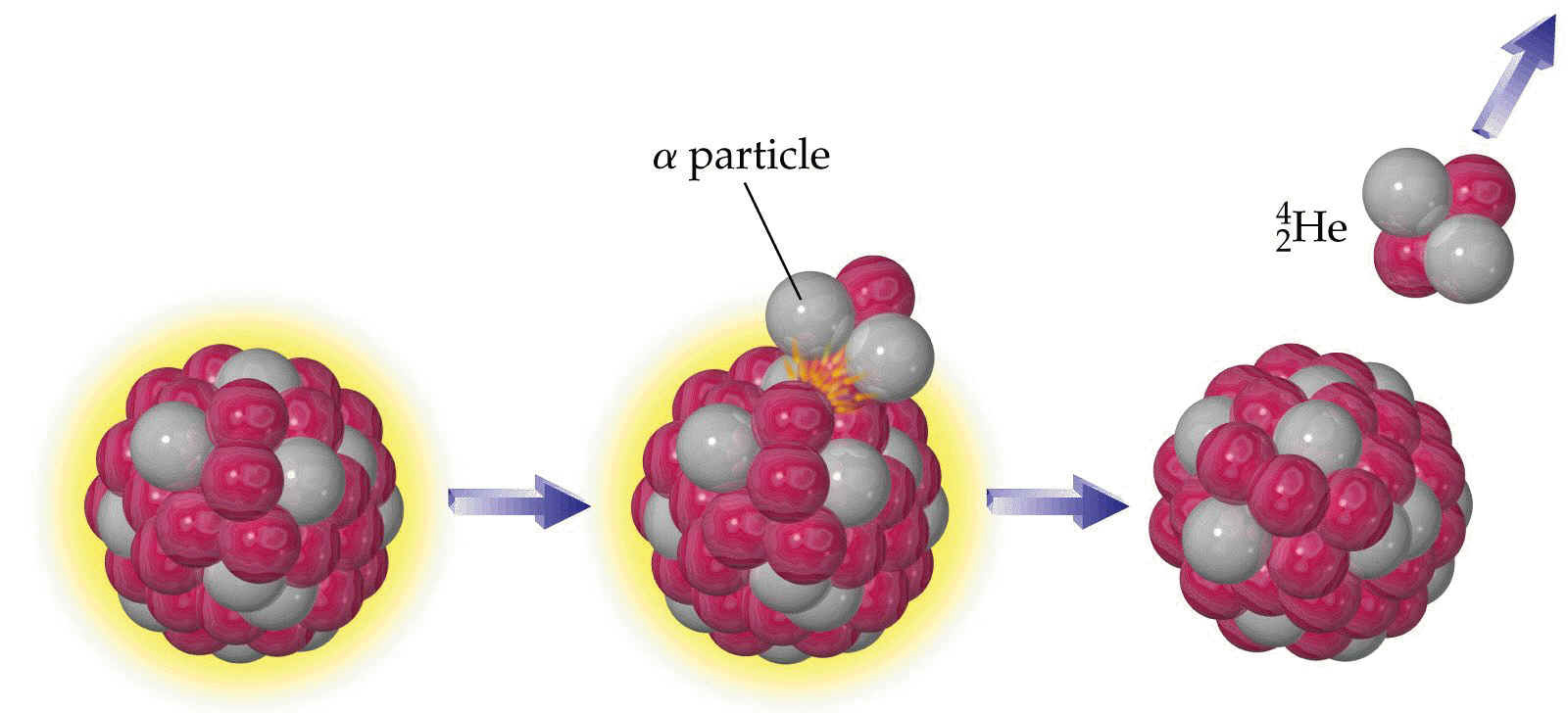What nuclide undergoes alpha decay to produce sodium-24?
1 Answer
Explanation:
You know that alpha decay takes place when an

An
In that case, if an
So, you know that an unknown radioactive isotope decays via alpha decay to yield a sodium-24 nucleus.
A sodium-24 nucleus contains 11 protons and 13 neutrons. This means that you can write
#""_Z^A"X" -> ""_11^24"Na" + ""_2^4alpha#
Here
So, if you take into account the fact that mass number and atomic number must be conserved in a nuclear reaction, you an say that
#A = 24 + 4" "# and#" "Z = 11 + 2#
The unknown isotope will thus have
#{(A = 28), (Z= 13) :}#
A quick look in the periodic table will show you that the element that has 13 protons in its nucleus is aluminium,
The complete nuclear equation will be
#""_13^28"Al" -> ""_11^24"Na" + ""_2^4alpha#

